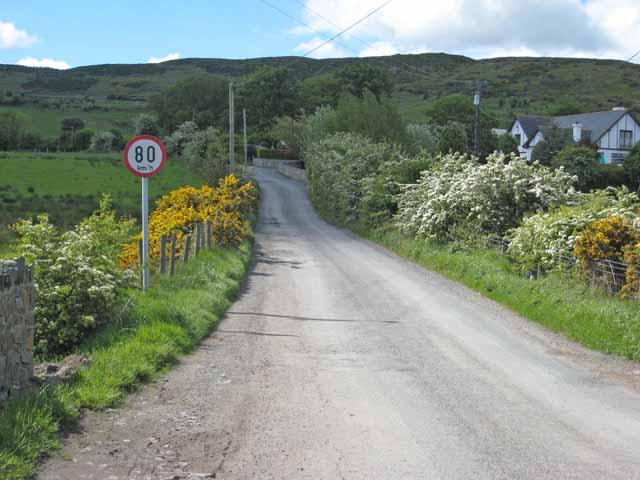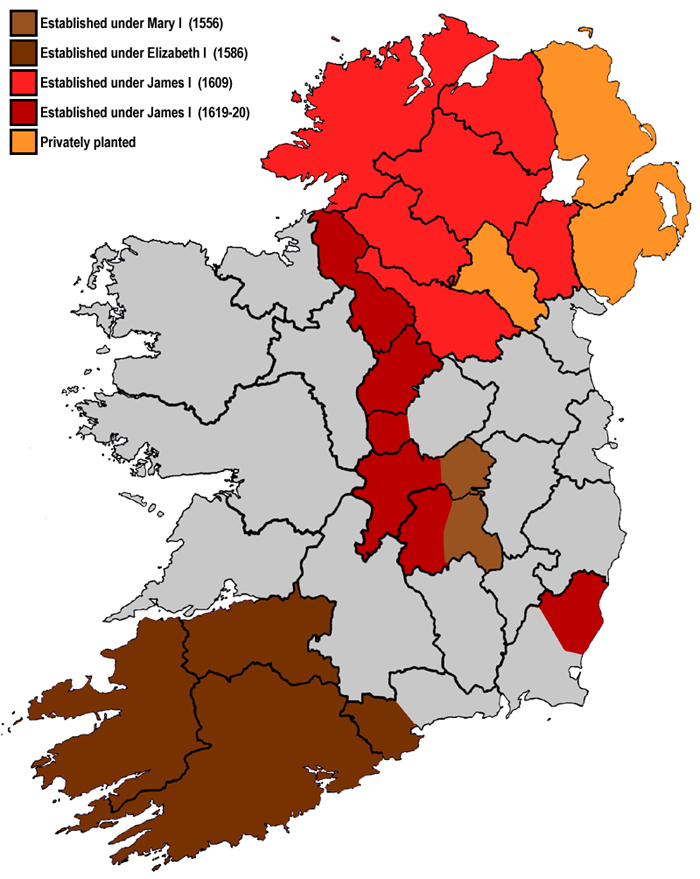|
St Georges Channel
St George's Channel ( cy, Sianel San Siôr, ga, Muir Bhreatan) is a sea channel connecting the Irish Sea to the north and the Celtic Sea to the southwest. Historically, the name "St George's Channel" was used interchangeably with "Irish Sea" or "Irish Channel" to encompass all the waters between Ireland to the west and Wales to the east. Some geographers restricted it to the portion separating Wales from Leinster, sometimes extending south to the waters between the West Country of England and East Munster; the latter have since the 1970s come to be called the Celtic Sea. In Ireland "St George's Channel" is now usually taken to refer only to the narrowest part of the channel, between Carnsore Point in Wexford and St David's Head in Pembrokeshire. However, it remains common in Ireland to talk about a cross-channel trip, cross-channel soccer, etc., where "cross-channel" means "to/from Great Britain". The current (third, 1953) edition of the International Hydrographic Organizat ... [...More Info...] [...Related Items...] OR: [Wikipedia] [Google] [Baidu] |
Kilmore Quay
Kilmore Quay () is a fishing village near Kilmore, in County Wexford, Ireland. As of 2016, it has a population of 372. It is a fishing village, but its leisure facilities such as sailing, and sea angling charters are also of economic importance. Tourism The village holds a seafood festival during the summer with seafood served every day, live music in the local pubs, and activities such as raft races and family fun days (pony rides, theatre). Architecturally notable buildings in the village include St Peter's Church, which was built in 1875 to a design attributed to architect George Ashlin. Ballyteige Castle, a 15th-century tower house which was the ancestral home of the Anglo-Irish Anglo-Irish people () denotes an ethnic, social and religious grouping who are mostly the descendants and successors of the English Protestant Ascendancy in Ireland. They mostly belong to the Anglican Church of Ireland, which was the establis ... Whitty family, who lived there until the 165 ... [...More Info...] [...Related Items...] OR: [Wikipedia] [Google] [Baidu] |
Republic Of Ireland–United Kingdom Border
The Republic of Ireland–United Kingdom border, sometimes referred to as the Irish border or British–Irish border, runs for Ordnance Survey of Northern Ireland, 1999MFPP Working Paper No. 2, "The Creation and Consolidation of the Irish Border" (PDF) by KJ Rankin and published in association with Institute for British-Irish Studies, University College Dublin and Institute for Governance, Queen's University, Belfast (also printed as IBIS working paper no. 48) from in the north-west of |
Channels Of Ireland
Channel, channels, channeling, etc., may refer to: Geography * Channel (geography), in physical geography, a landform consisting of the outline (banks) of the path of a narrow body of water. Australia * Channel Country, region of outback Australia in Queensland and partly in South Australia, Northern Territory and New South Wales. * Channel Highway, a regional highway in Tasmania, Australia. Europe * Channel Islands, an archipelago in the English Channel, off the French coast of Normandy * Channel Tunnel or Chunnel, a rail tunnel underneath the English Channel * English Channel, called simply "The Channel", the part of the Atlantic Ocean that separates Great Britain from northern France North America * Channel Islands of California, a chain of eight islands located in the Pacific Ocean off the coast of Southern California, United States * Channel Lake, Illinois, a census-designated place in Lake County, Illinois, United States * Channels State Forest, a state forest in Virgini ... [...More Info...] [...Related Items...] OR: [Wikipedia] [Google] [Baidu] |
Channels Of Wales
Channel, channels, channeling, etc., may refer to: Geography * Channel (geography), in physical geography, a landform consisting of the outline (banks) of the path of a narrow body of water. Australia * Channel Country, region of outback Australia in Queensland and partly in South Australia, Northern Territory and New South Wales. * Channel Highway, a regional highway in Tasmania, Australia. Europe * Channel Islands, an archipelago in the English Channel, off the French coast of Normandy * Channel Tunnel or Chunnel, a rail tunnel underneath the English Channel * English Channel, called simply "The Channel", the part of the Atlantic Ocean that separates Great Britain from northern France North America * Channel Islands of California, a chain of eight islands located in the Pacific Ocean off the coast of Southern California, United States * Channel Lake, Illinois, a census-designated place in Lake County, Illinois, United States * Channels State Forest, a state forest in Virginia ... [...More Info...] [...Related Items...] OR: [Wikipedia] [Google] [Baidu] |
Bodies Of Water Of The Irish Sea
Bodies may refer to: * The plural of body * ''Bodies'' (2004 TV series), BBC television programme * Bodies (upcoming TV series), an upcoming British crime thriller limited series * "Bodies" (''Law & Order''), 2003 episode of ''Law & Order'' * Bodies: The Exhibition, exhibit showcasing dissected human bodies in cities across the globe * ''Bodies'' (novel), 2002 novel by Jed Mercurio * ''Bodies'', 1977 play by James Saunders (playwright) * ''Bodies'', 2009 book by British psychoanalyst Susie Orbach Music * ''Bodies'' (album), a 2021 album by AFI * ''Bodies'' (EP), a 2014 EP by Celia Pavey * "Bodies" (Drowning Pool song), 2001 hard rock song by Drowning Pool * "Bodies" (Sex Pistols song), 1977 punk rock song by the Sex Pistols * "Bodies" (Little Birdy song), 2007 indie rock song by Little Birdy * "Bodies" (Robbie Williams song), 2009 pop song by Robbie Williams * "Bodies", a song by Megadeth from ''Endgame'' * "Bodies", a song by The Smashing Pumpkins from ''Mellon Collie an ... [...More Info...] [...Related Items...] OR: [Wikipedia] [Google] [Baidu] |
Straits Of Moyle
The North Channel (known in Irish and Scottish Gaelic as , in Scots as the ) is the strait between north-eastern Northern Ireland and south-western Scotland. It begins north of the Isle of Man, where the Irish Sea ends, and runs north-west into the Atlantic Ocean. Geography The North Channel connects the Irish Sea with the Atlantic Ocean and is part of the marine area officially classified as the "Inner Seas off the West Coast of Scotland" by the International Hydrographic Organization (IHO). The Straits of Moyle ( in Irish and Scottish Gaelic) or Sea of Moyle is the name given to the narrowest expanse of sea in the North Channel between north-eastern Northern Ireland (County Antrim) and south-western highlands of Scotland (Mull of Kintyre). The distance between the two shores is approximately at its closest point, and thus it is possible to see across in clear weather conditions. The straits gave their name to Moyle District Council, a local government area in Northern Irel ... [...More Info...] [...Related Items...] OR: [Wikipedia] [Google] [Baidu] |
North Channel (Great Britain And Ireland)
The North Channel (known in Irish and Scottish Gaelic as , in Scots as the ) is the strait between north-eastern Northern Ireland and south-western Scotland. It begins north of the Isle of Man, where the Irish Sea ends, and runs north-west into the Atlantic Ocean. Geography The North Channel connects the Irish Sea with the Atlantic Ocean and is part of the marine area officially classified as the "Inner Seas off the West Coast of Scotland" by the International Hydrographic Organization (IHO). The Straits of Moyle ( in Irish and Scottish Gaelic) or Sea of Moyle is the name given to the narrowest expanse of sea in the North Channel between north-eastern Northern Ireland (County Antrim) and south-western highlands of Scotland (Mull of Kintyre). The distance between the two shores is approximately at its closest point, and thus it is possible to see across in clear weather conditions. The straits gave their name to Moyle District Council, a local government area in Northern Ire ... [...More Info...] [...Related Items...] OR: [Wikipedia] [Google] [Baidu] |
Nicobar Islands
The Nicobar Islands are an archipelagic island chain in the eastern Indian Ocean. They are located in Southeast Asia, northwest of Aceh on Sumatra, and separated from Thailand to the east by the Andaman Sea. Located southeast of the Indian subcontinent, across the Bay of Bengal, they are part of India, as the Nicobar district within the union territory of the Andaman and Nicobar Islands. UNESCO has declared the Great Nicobar Island as one of the World Network of Biosphere Reserves. The International Coordinating Council of UNESCO’s Man and the Biosphere Programme (MAB), added the following new sites to the World Network of Biosphere Reserves (WNBR) http://www.unesco.org/new/en/media-services/multimedia/photos/mab-2013/india/. Geography The Nicobar Islands cover a land area of and had a popula ...[...More Info...] [...Related Items...] OR: [Wikipedia] [Google] [Baidu] |
Plantations Of Ireland
Plantations in 16th- and 17th-century Ireland involved the confiscation of Irish-owned land by the English Crown and the colonisation of this land with settlers from Great Britain. The Crown saw the plantations as a means of controlling, anglicising and 'civilising' Gaelic Ireland. The main plantations took place from the 1550s to the 1620s, the biggest of which was the plantation of Ulster. The plantations led to the founding of many towns, massive demographic, cultural and economic changes, changes in land ownership and the landscape, and also to centuries of ethnic and sectarian conflict. They took place before and during the earliest English colonisation of the Americas, and a group known as the West Country Men were involved in both Irish and American colonization. There had been small-scale immigration from Britain since the 12th century, after the Anglo-Norman invasion. By the 15th century, direct English control had shrunk to an area called the Pale. In the 1540s t ... [...More Info...] [...Related Items...] OR: [Wikipedia] [Google] [Baidu] |
Byzantine Empire
The Byzantine Empire, also referred to as the Eastern Roman Empire or Byzantium, was the continuation of the Roman Empire primarily in its eastern provinces during Late Antiquity and the Middle Ages, when its capital city was Constantinople. It survived the fragmentation and fall of the Western Roman Empire in the 5th century AD and continued to exist for an additional thousand years until the fall of Constantinople to the Ottoman Empire in 1453. During most of its existence, the empire remained the most powerful economic, cultural, and military force in Europe. The terms "Byzantine Empire" and "Eastern Roman Empire" were coined after the end of the realm; its citizens continued to refer to their empire as the Roman Empire, and to themselves as Romans—a term which Greeks continued to use for themselves into Ottoman times. Although the Roman state continued and its traditions were maintained, modern historians prefer to differentiate the Byzantine Empire from Ancient Rome ... [...More Info...] [...Related Items...] OR: [Wikipedia] [Google] [Baidu] |
Roman Britain
Roman Britain was the period in classical antiquity when large parts of the island of Great Britain were under occupation by the Roman Empire. The occupation lasted from AD 43 to AD 410. During that time, the territory conquered was raised to the status of a Roman province. Julius Caesar invaded Britain in 55 and 54 BC as part of his Gallic Wars. According to Caesar, the Britons had been overrun or culturally assimilated by other Celtic tribes during the British Iron Age and had been aiding Caesar's enemies. He received tribute, installed the friendly king Mandubracius over the Trinovantes, and returned to Gaul. Planned invasions under Augustus were called off in 34, 27, and 25 BC. In 40 AD, Caligula assembled 200,000 men at the Channel on the continent, only to have them gather seashells ('' musculi'') according to Suetonius, perhaps as a symbolic gesture to proclaim Caligula's victory over the sea. Three years later, Claudius directed four legi ... [...More Info...] [...Related Items...] OR: [Wikipedia] [Google] [Baidu] |






